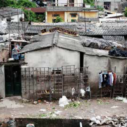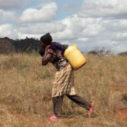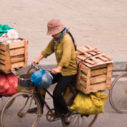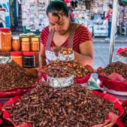
Search
Articles

Polishing the poverty lens
South Africa measures poverty using a monetary approach as well as multidimensionally, with the former measure being the official poverty measure.It has been my experience that you can either present complex phenomena such as poverty elegantly with a single composite index or awkwardly with a multiplicity of indices. It is a challenging task to explain the latter to busy policymakers and politicians with the short attention spans of speed-master tweeters. These two positions of simplicity versus complexity are a matter of deep intellectual discourse that spans decades if not centuries.

Editorial – Dimensions 8
In this issue, we highlight two examples of national multidimensional poverty indices. We explore Viet Nam’s experience using a national MPI as an official measure of poverty to complement income-based measures. Lo Thi Duc, Senior Statistician at the General Statistics Office of Viet Nam, takes us through how Viet Nam has used the MPI-VN not only to monitor poverty but also to identify the beneficiaries of social programmes.

Multidimensional Poverty in Viet Nam: Sustainable Poverty Reduction 2016–2020
In Viet Nam, the Government publishes national targets for poverty reduction every five years and updates poverty lines to measure changes in poverty within those five-year periods. Up to and including 2015, Viet Nam only used an income-based poverty measure. The poverty line was set at the amount of money per month sufficient for a 2100 Kcal/person/day diet as well as essential non-food spending. Using the Poverty Census, the Ministry of Labour, Invalids and Social Affairs (MOLISA) then identified and made a commune-level list of poor households based on this poverty line, and this list was reviewed and updated annually. The General Statistics Office (GSO) then conducted the Viet Nam Household Living Standards Survey (VHLSS) and disseminated its findings on income levels, poverty rates, and the GINI inequality coefficient.

The Use of the Multidimensional Poverty Measure in Oaxaca
Oaxaca is a Mexican state that is rich in both natural resources and cultural heritage. It is the cradle of the Zapotec and Mixtec cultures, which are emblematic of the Pre-Hispanic period. At 93,757 km2, it is the fifth largest state in Mexico and has 3.8 million inhabitants, with an average age of 24 years – two years younger than the national average. It is a young population that represents a great advantage for the state’s social and economic development. Sixty per cent of the population is indigenous, and 33% speak an indigenous language.

Measuring Poverty in Businesses
In Costa Rica, approximately 87% (1) of jobs are in the private sector. It is a dynamic sector that is constantly growing. However, what are the living conditions of these workers? Does having a job and an income ensure that they have a good quality of life? Could there be multidimensionally poor workers in the private sector? The association Horizonte Positivo, with the support of the Oxford Poverty and Human Development Initiative (OPHI), developed the Business Multidimensional Poverty Index (bMPI) to answer these questions.












